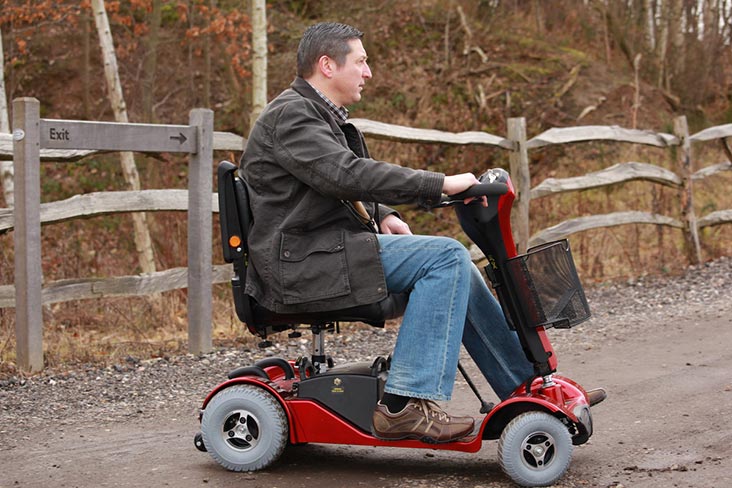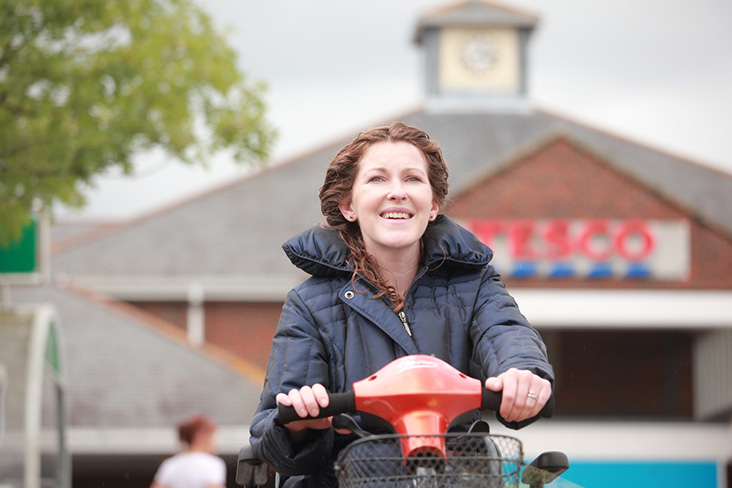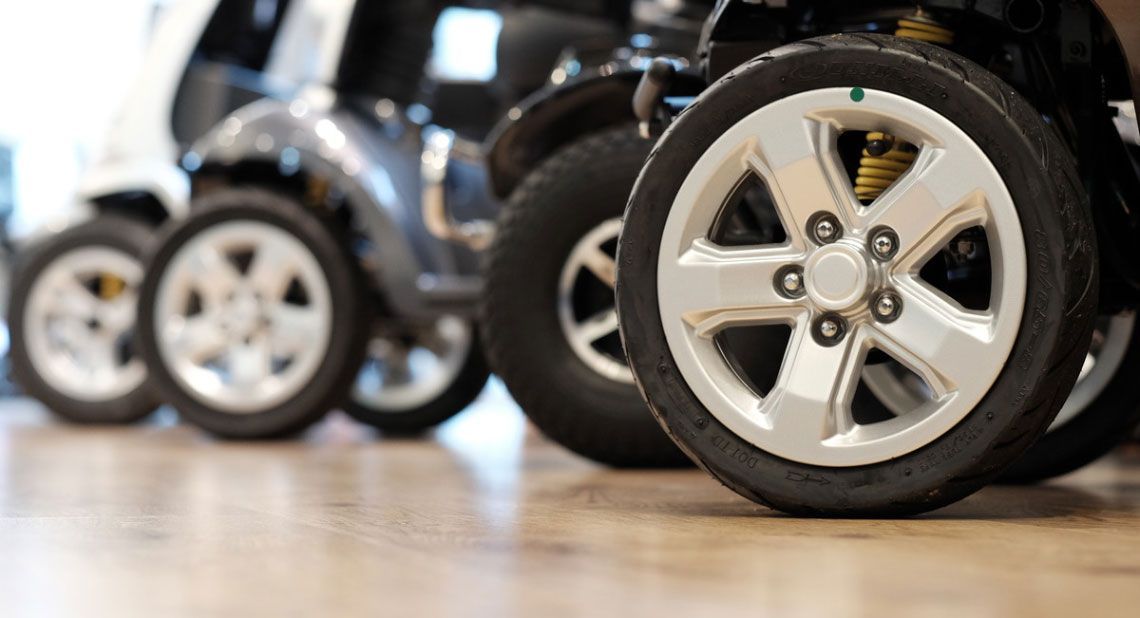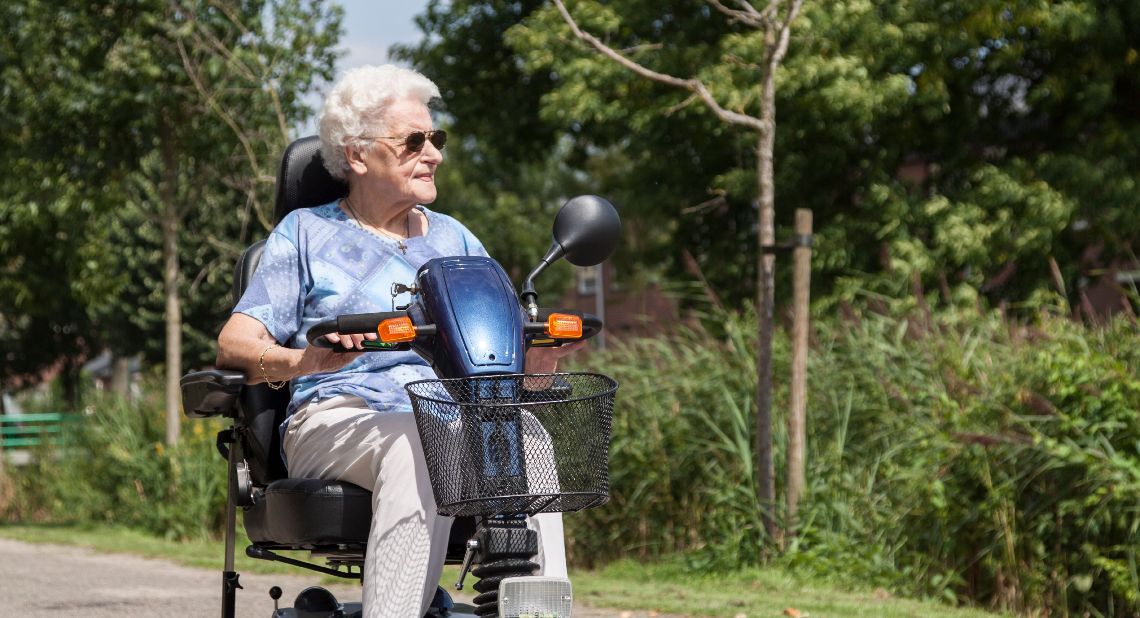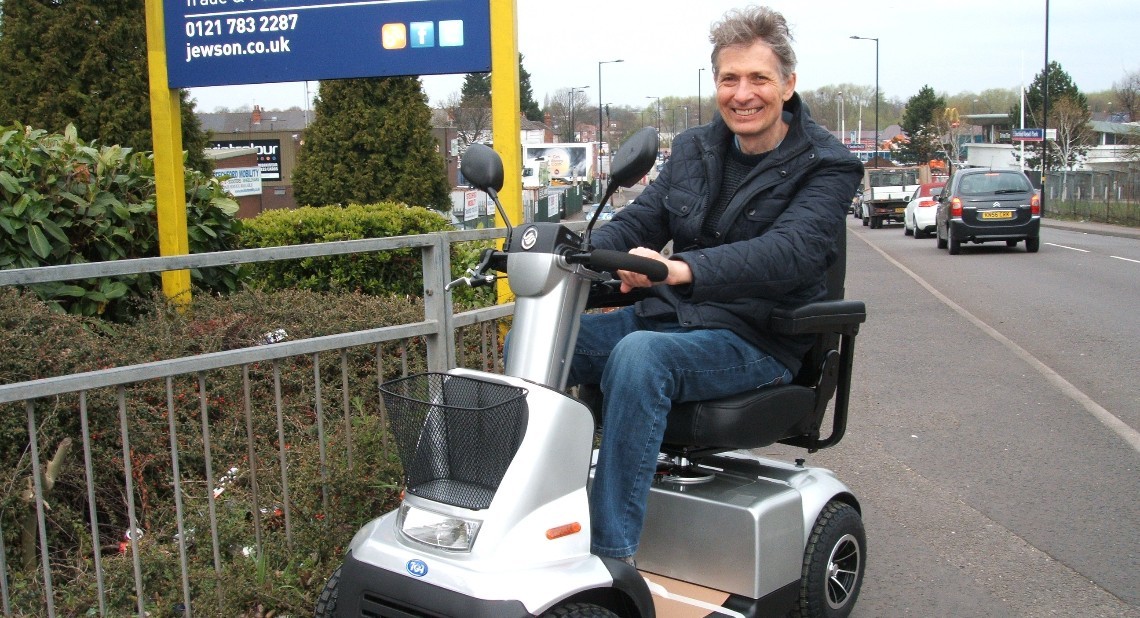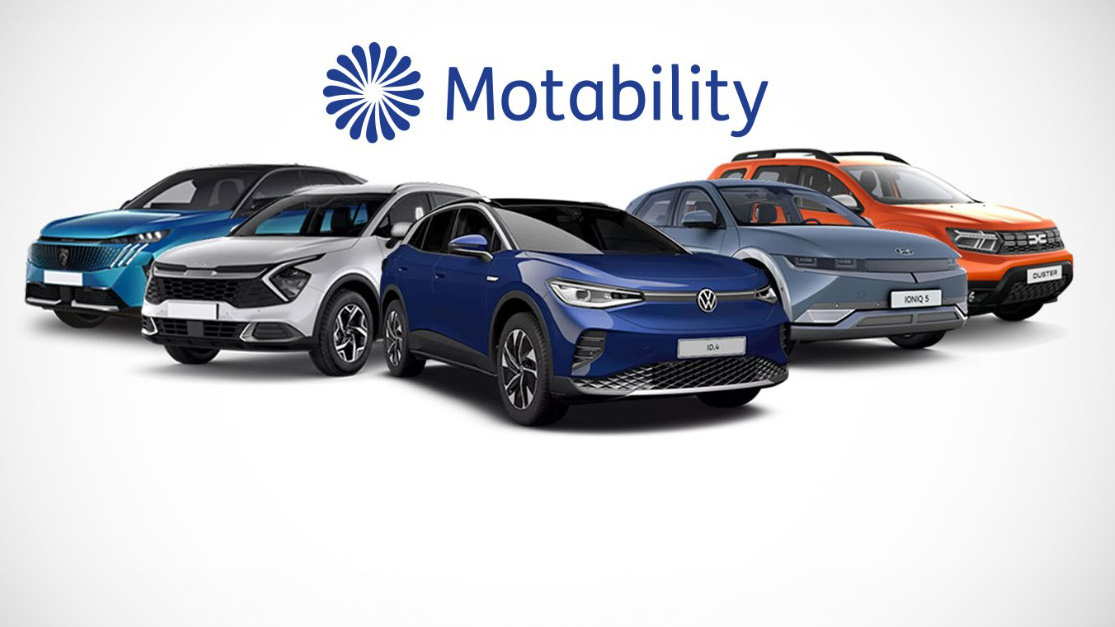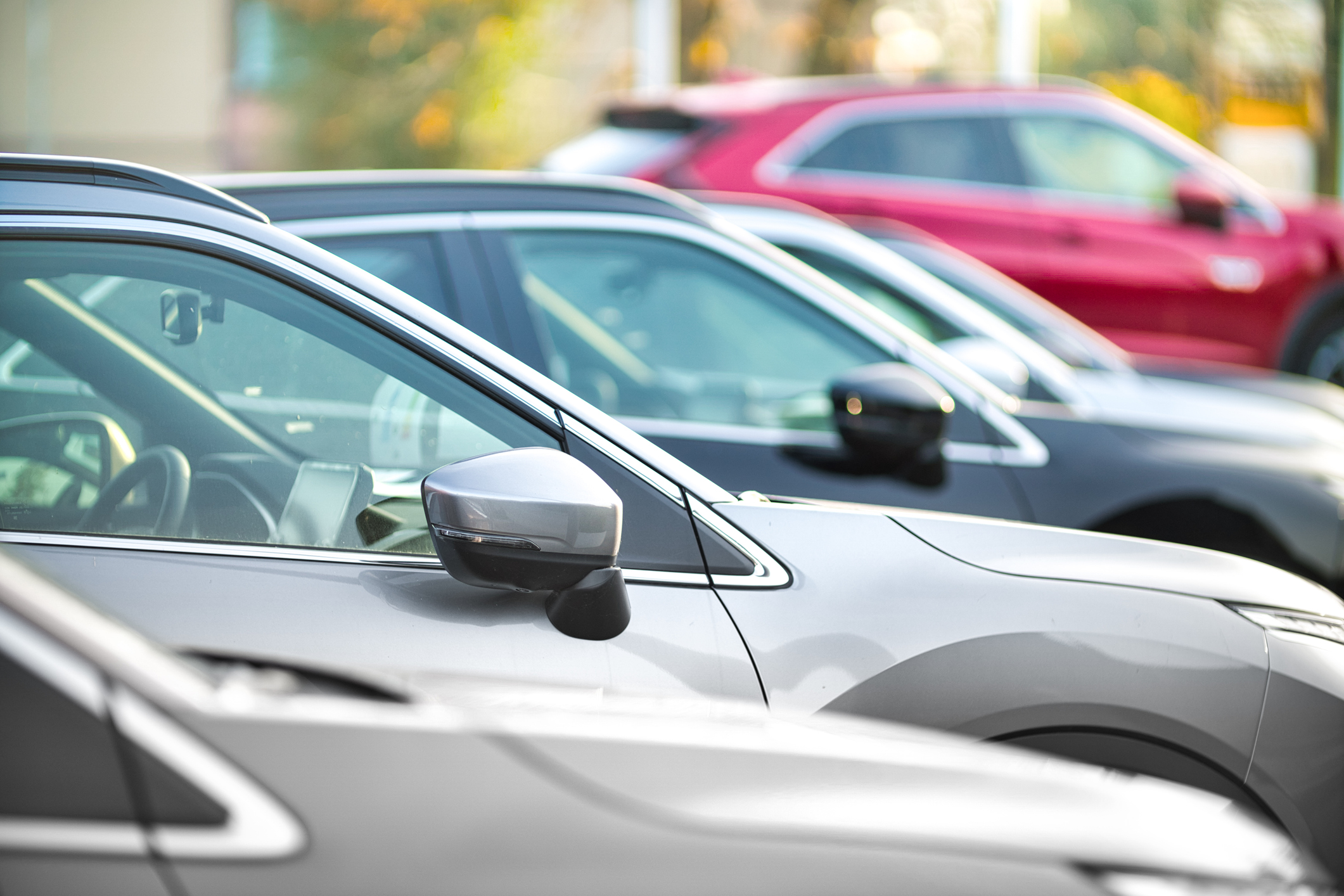Over the past 50 years, mobility scooters have come a long way—in every sense. Early models were cumbersome and the very first ones had petrol rather than electric engines — hardly ideal! By contrast, modern electric scooters are clean, quiet and increasingly visible on our ever-more accessible transport network. They are fast becoming must-haves for many people with limited mobility.
To bring Motability Scheme customers up to speed on mobility scooters, we have compiled a list of facts about them and some myth-busting while we’re at it.
1. How fast do mobility scooters go?
Some scooters (Class 3 scooters) can go up to 8 mph, which is twice as fast as walking speed. They can go this fast on the road, however, they are restricted to 4 mph on pavement. Any scooters that go any faster than this will have a speed limiter switch to ensure that they don’t go any faster than is allowed! Smaller mobility scooters go a little slower at 4 mph (walking speed).
2. What’s the difference between different types of mobility scooters?
Scooters come in all shapes and sizes. They range from the tiny fold up “boot scooters”, weighing as little as 40lbs (20 bags of sugar), to the large all-terrain models used by ramblers and others who need to use their mobility scooters on different terrain. These weigh in at 140kg (more than 20 stone!).
3. I’ve read that mobility scooters are divided into Class 2 and Class 3 types; what’s the difference?
Different types of mobility scooters have different speed limits
The main differences between the classes of scooters are about size and speed, as well as the terrain they are allowed to drive on. Class 2 scooters are smaller with lower speed limits, while Class 3 scooters are larger and can be used on the road. Class 3 scooters must also be registered with the DVLA if they are going to be used on the road, but don’t worry— your dealer will organise this at the start of your lease as part of your worry-free package.
4. How far can they travel on a single charge?
A typical Class 3 scooter will go for at least 25 miles on flat ground (less on hills). Small boot scooters could have ranges as low as 5 miles. Apart from size, this will also depend on other factors, such as how much weight the scooter is carrying. Most mobility scooters have a charge bar on their instrument panel so you’ll have a good idea of how long you’ll be able to go for when you go out.
5. Do I need insurance?
Whilst scooter users aren’t legally obliged to have insurance, Motability Scheme customers have insurance included in their lease agreement, so you can have total peace of mind!
Road tax and insurance are both included in the Motability Scheme
6. Do I need a driving licence or to pass a test to drive a mobility scooter?
No, but you should practice before going out on the road! You can use your dealer appointment and test run to make sure you’re confident on your scooter and ask anything you need to know about using it out on the road or pavement.
7. Can I take my mobility scooter on a bus or train?
In general, the smaller and lighter your scooter the greater the likelihood of it being allowed on a bus or train. In any case, we highly recommend that you contact the bus or train company before travelling and tell them what the scooter is and its size dimensions. Some transport operators run a permit scheme where you show your permit (much like a bus pass) to the driver. The National Rail Enquiry is also a useful source of information for taking your scooter on trains.
For more information on using your mobility scooter on public transport, check out our top tips.
8. How easy is it to take them on shopping trips?
Most shopping centres and supermarkets should be fine to get around with mobility scooters
Modern shopping centres are a breeze with scooters and most supermarkets should present few problems. Of course, high shelves can be an issue but it’s usually possible to book assisted shops where assistants will help bring down goods from high shelves and even load up your trolley for you. You can check online if this service is available before going.
9. What accessories can I get?
In a word… lots! A scooter canopy is useful for keeping you dry in wet weather, and a cape also works well. A raincover to keep your product protected is included as part of your lease package, or if you already have a raincover you can choose alternative accessories up to the value of £35.
Extra storage space is also useful, such as tiller bags that sit below the tiller or even panniers that fit on the back. It’s also a good idea to have a crutch/walking stick bag or somewhere secure to keep your walking aid. And it’s even possible to get anti-theft alarms for your mobility scooter—much like car alarms.
The Motability Scheme enables you to exchange your mobility allowance for leasing a scooter. Find out more by ordering a free information pack and browsing the scooters available to customers.
More articles like this
Choosing the right mobility scooter for you
A guide to travelling by scooter and powered wheelchair
Going to a football match with a disability: what to expect
![]()

